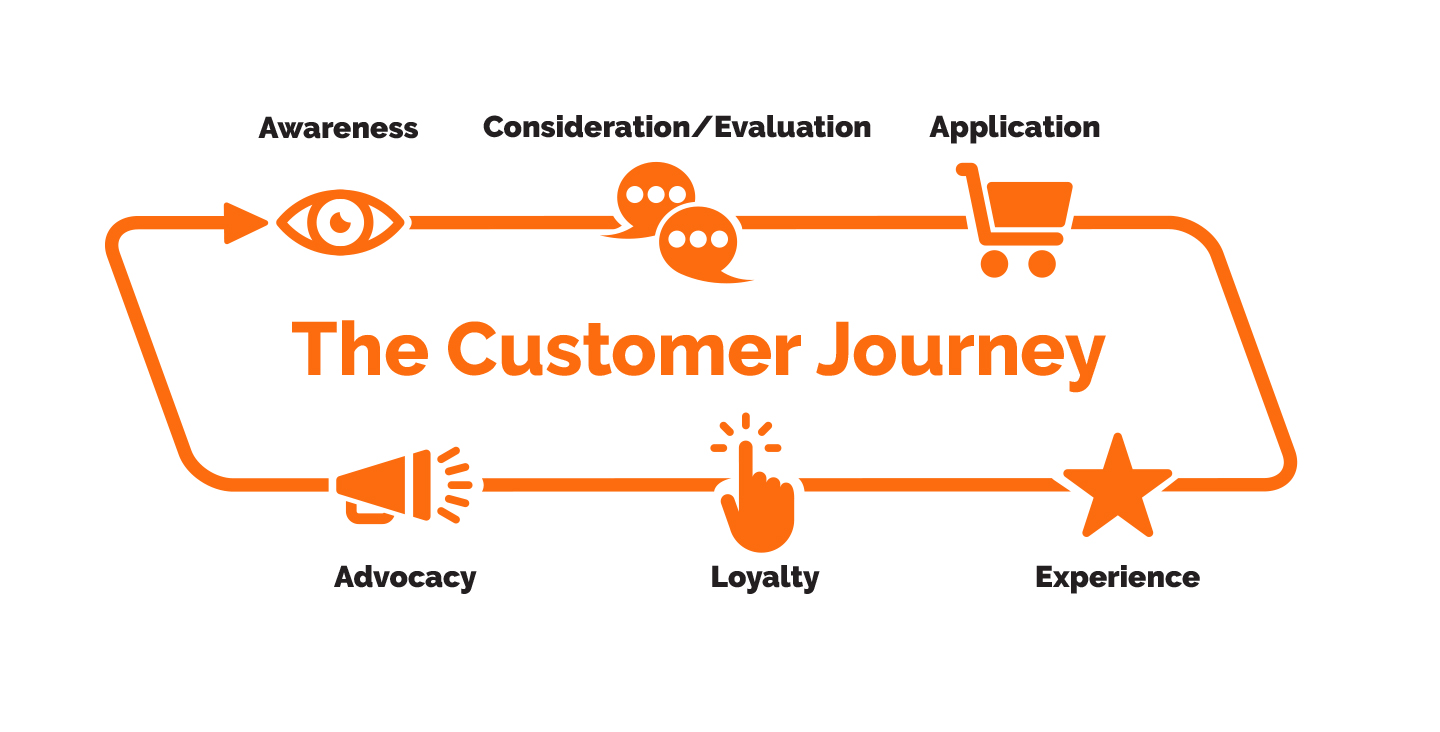Imaginasium | Marketing Communications | 10 minute read
9 Tips, Trends and Ideas for a Winning Manufacturing Marketing Strategy
When it comes to marketing for manufacturers, what are the smartest approaches that bring the best results? There are so many channels – email marketing, search engine optimization, inbound marketing, automation, video content, and more. But which ones build long-term relationships with decision makers in your target audience?
Based on our 25 years working with manufacturing to help grow revenues and build customer relationships, we’ve put together a list of Top Tips to help make sure that every penny spent on marketing counts.
How Is Manufacturing Marketing Like/Unlike Consumer Marketing?

When we talk about Manufacturing Marketing, we are talking about the B2B marketing you do to support your sales force in building awareness, interest, desire and action in current and potential customers. It’s collateral, trade shows, ads in trade publications, and dealer and distributor sales pieces – as well as online advertising, websites, product videos and any other tools designed to persuade B2B buyers to purchase what you make.
Consumer Marketing, on the other hand, speaks directly to the end user. Until recently, there were often hard lines drawn between B2B and B2C marketing, but those lines are starting to blur. Let’s start with one way that is still a major difference…
In Manufacturing Marketing, the client is making a decision on behalf of a company, rather than for their home, family, or personal use. These are often decisions with a lot of zeroes attached – crates upon crates of a product, for example, rather than just one. This means that the stakes are high. Purchasing agents carefully research, review, recommend, then review again before a purchase is approved. In this space, there is no such thing as an impulse buy.

For years, the language, design, and even processes that B2B marketing promoted were cold and clinical, sometimes complicated and laborious, and often did not take the user’s experience into account. In recent years, B2B marketing has taken a lot of cues from B2C marketing – because Consumer Marketing is great at understanding a customer’s state of mind and answering their questions throughout the buying process.
To succeed in 2021 and beyond, this is exactly what Manufacturing Marketing needs to do.
Stop and think about it: whether you’re talking about B2B, B2C, or B2B2C, each one of those Bs and Cs represent a human being. And humans don’t make decisions based merely on rational facts. We’re emotional beings, and no matter how logically we approach a situation, in the end our decisions are powerfully influenced by emotional resonance.
In fact, some studies show that emotion plays an even greater role in B2B buying decisions:
“On average, B2B customers are significantly more emotionally connected to their vendors and service providers than consumers.
While it may seem surprising at first, this high level of connection with B2B customers makes a lot of sense. When a personal consumer makes a bad purchase, the stakes are relatively low. Best case, it’s returnable. If not, it might require an explanation to a spouse. Business purchases, on the other hand, can involve huge amounts of risk: Responsibility for a multi-million dollar software acquisition that goes bad can lead to poor business performance and even the loss of a job. The business customer won’t buy unless there is a substantial emotional connection to help overcome this risk.”
— Think with Google
6 Challenges for Manufacturing Marketing

1. Your company sells higher-consideration purchases
While most consumer marketing works to influence the purchase of something relatively small and relatively affordable, manufacturing purchase decisions are typically a much bigger deal. A single purchase order might be for more than a million dollars, or be a key moment in a long-term relationship that is important to the company. The jobs and livelihoods of people often depend on the buying decisions made in the B2B space. So as a marketer, you must know what drives the decisions of your customer, catch their attention with these key messages, and be ready to answer truly probing questions.
2. Your customers are looking for specific products
Manufacturing customers often need a very specific part or component. They are not coming to you for options and choices; rather, they know exactly what they need and are looking for a supplier they can depend on. This means that a dual marketing message is critical: both about the fit of the product to their need, and your company’s unshakeable reliability for a long-term partnership.

3. These products are often complex

One of the hardest parts of Manufacturing Marketing is figuring out how to describe your products and services. They are often highly technical, specialized, or just plain difficult to explain without a lengthy conversation.
That said, the best marketing is still simple, memorable, and makes an emotional connection. Getting from specs and tolerances and materials to a single, emotionally compelling message is a tough row to hoe — but when you do it well, it’s what separates mediocre marketing from the best in the field.
4. Products have a long sales cycle
B2B buyers do a ton of research, because they need to know they’re making the best decision possible. Imagine that each time you buy a pair of shoes, you had to place an order for 500,000 of that exact item. You would likely take more time before swiping your credit card! As a result, Manufacturing Marketing is never about a “one and done” customer touch; rather, you should build your marketing materials and messages for a long-term, research-heavy decision making process.
5. Industry 4.0 and the battle for talent

We’ve entered what some call the fourth industrial revolution, or Industry 4.0, where the pace of technological innovation is changing the face of manufacturing.
Big data and analytics, automation, AI, additive manufacturing, and the industrial internet of things are all changing how manufacturing works, as well as the skills manufacturing will depend on to compete. Manufacturing marketing needs to rise to the level of sophistication that matches the state of the industry.
As a result, manufacturers are battling each other to attract the few people who have the skills that many need. Some studies indicate that by 2028 more than 2.4 million manufacturing jobs could go unfilled. That means manufacturing marketing needs to work extra hard to not just help you make sales, but to position your company as a place where people want to work. And, of course, you have to actually be that before you can create marketing that says it.
6. Customer expectations have changed
As we said before, B2B buyers are people. And as people, they have lives outside of work, where they do all sorts of normal-people things like shop for groceries, go to restaurants, or flip through social media.
As they do, they absorb and react to hundreds (if not thousands) of consumer marketing messages every day. These experiences, and the emotional connection that the best ones build, shape their thinking about how to make buying choices. As a result, today’s B2B customer expects a better marketing and buying experience from suppliers. Your company’s marketing is not only compared to your direct competitors – it’s also compared to Warby Parker and Home Depot and Coca Cola, not to mention the Starbucks Barista who always remembers how they love their latte.
Simply put, manufacturing marketing must be about creating a fantastic experience, everywhere a customer might interact with your brand.
What to Include in Your Manufacturing Marketing Strategy
So let’s look at tactics and initiatives you might put into your Manufacturing Marketing plan. Here’s a quick snapshot of a few heavy hitters to consider:
• Messaging strategy. When it comes to talking about products and services, messaging often gets too complex for its own good. We understand that there is a lot to talk about and many intricate details that customers might need to know; but you have certainly seen examples of writing that is full of impenetrable technical jargon or websites with more words than anyone wants to read… perhaps even at your own company.
• Think about your messaging in tiers. The first tier is about making an emotional connection by clearly and simply explaining what you do and what benefit you bring to a potential customer’s life, so they want to know more. The second tier clearly explains your credibility and differentiation. If they keep scrolling they get to the third tier – where you can get as technical and specific as you want, because at that point your reader will be ready for the details.
• Content marketing strategy. High quality content is fantastic for building relationships with customers and positioning you as an authority in your industry. Give away, for free, knowledge that is truly useful, that answers your customer’s questions, and that provides real value. It’s a powerful way to build relationships that can develop into long-term sales.
• Digital marketing strategy. According to an Acquity Group study, 94 percent of B2B buyers conduct research online before making a purchase. They want to get as far down the road as possible before speaking to a sales rep. So it’s critical that you be one of the companies they find, when they’re searching online. This is the purpose of digital marketing: from smart search engine optimization (SEO) to well-planned search engine marketing (SEM), adwords and remarketing ads, even social media advertising.
• Website strategy. Because so much research is happening online, most customers will at some point come to your website – and make a decision within 3 seconds whether or not you have the credibility and expertise to be a reliable supplier. Gone are the days where you get a pass, just because you are a manufacturer. Your website must look polished and professional, it must present key messages at the very top in a way that draws people in; it also must load quickly and look great on a mobile device. In other words, it needs to meet the needs of customers who visit – not only offer information like the “digital brochure” websites of the 1990s.
• Video strategy. According to predictions by Cisco, by 2022 video could account for 82 percent of all internet traffic. People love video, for good reason: it is more engaging, entertaining, and memorable. It is uniquely able to make strong emotional connections like curiosity, amusement, intrigue, and even a feeling of being understood and valued. But it’s not just about making a video that is focused on your company history and values; it’s about building those emotionally resonant moments between potential customers and your product, as well as your company.
• Social media strategy. Not all social media makes sense for Manufacturing Marketing. But some does – especially when you get into recruitment and culture-building. Social media is great for starting conversations, connecting with job candidates, and giving your customers an inside look at who you really are and what a relationship with you could really feel like.
• Email marketing strategy. Email is still one of the most effective and efficient ways to communicate with your customers directly. More than 102 trillion emails are sent every year; the average email subscriber receives 13 commercial emails a day. The click-through rates are higher on email than on any other digital marketing channel, and with the ubiquity of mobile phones this will continue into the foreseeable future.
• Direct mail strategy. Curiously, direct mail has been having a bit of a resurgence in recent years. It suddenly feels a bit special to get something in your mailbox, with an actual stamp or postage mark. The key with direct mail is the same as with other marketing – don’t be obnoxious, and make certain you’re doing it in a way that takes into account everything you’ve learned about your customers and their needs.
3 Steps to Get Started
So let’s look at tactics and initiatives you might put into your Manufacturing Marketing plan. Here’s a quick snapshot of a few heavy hitters to consider:

How do we take all of this information and turn it into action?
A sound marketing strategy will focus on a single linchpin: delivering a fantastic customer experience. One that clearly presents your products and creates an emotional connection as you show the benefit you bring their lives.
That doesn’t happen by accident. Here’s how to get started with creating a great Manufacturing Marketing strategy:
1. Understand your audience

Get to know as much as possible about the people making buying choices.
What’s their job title? Age? Gender? Location? How do they like to communicate? What’s most important to them? What do they read or go for information? What fears or concerns keep them up at night? What problem are they trying to solve, and what’s been getting in the way of solving it?
Creating a buyer persona is a hugely valuable exercise. We know that you have many customers – but creating an archetypal customer (based on real ones) helps you focus your marketing efforts. Rather than a “shotgun” approach, you can have a “laser-focused” approach, where you truly understand your target audience. Remember, marketing is a conversation.
Think of a persona as though you were talking to an audience of one. Be brutally honest, making sure that your persona has hesitations about working with you, or how to engage them if they have a bad experience. This helps you align with their values, shape their expectations, and show true empathy for their challenges… and that’s where true connections are made. You’ll be amazed at how many people you connect with, when you speak as if to an audience of one.
2. Identify your goals
Get very intentional about what you want to happen as a result of your marketing – more specific than “generate sales” (especially since manufacturing can have a long sales cycle). You’d never expect a customer to just buy the first time they hear your name. Identify specific, measurable goals for every stage of the customer’s buying journey.

What’s your goal? Is it:
• To improve your number of qualified sales leads coming through your website?
• Increase word-of-mouth referrals?
• Double your contacts?
• Add a certain number of distributors?
• Increase engagement on social media?
• Something else?
Why are those your goals? To what end?
Random acts of marketing are helpful to no one. Be as intentional as you can by setting specific goals, so you’ll know where to invest time and resources, and how to measure success.
3. Get sales and marketing on the same page

Manufacturing marketing is hard enough as it is; misalignment between sales and marketing just makes it harder. Sales doesn’t feel that they’re getting the right support, and so gets frustrated. Marketing gets fed up with sales for demanding one-off pieces that don’t fit with the overall strategy and brand.
The crux of the issue, though, is not simply getting sales and marketing to play nice. It’s getting both teams to understand, buy into, and be passionate about the overall vision of the company.
They need to both be aligned with who you are and what you’re trying to achieve. When they have the same starting point and motivation, when they’re all pulling in the same direction, your sales and marketing teams will be able to join forces to make each other and your overall experience better.
Partnering with Manufacturing Marketing experts like Imaginasium gives you a valuable, expert guide to how to build connections between products and B2B customers, companies and clients. It can also help you get to a usable strategy with less confusion, and with more growth in revenues, faster.
Ready to grow? Let’s talk.
